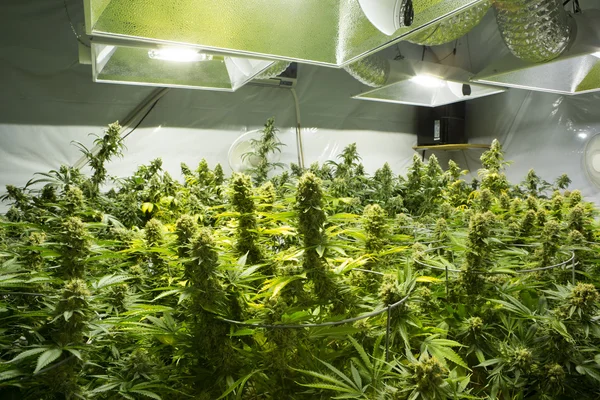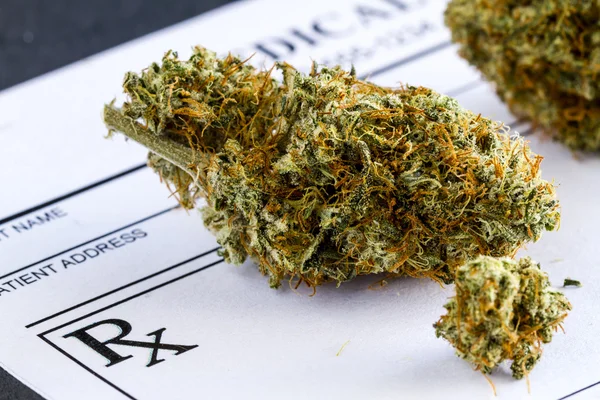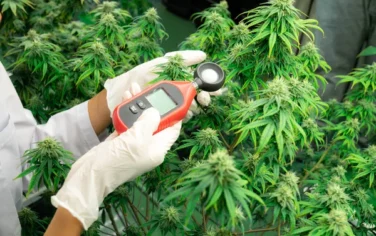Comparison of Cannabis Laws in Federal and Regional Systems: Lessons from Canada and the USA

November 08, 2024
I. Introduction
In recent years, the global community has witnessed significant shifts in cannabis regulation policies. Among the countries that have taken the most radical steps in this direction are Canada and the United States stand out. Both are federal systems with different approaches to the legalization and regulation of cannabis.
A. Relevance in the Context of Global Changes in Cannabis Policy
1. Global Trend Towards Liberalization:
– A growing number of countries are reviewing their cannabis policies.
– Shift from a strictly prohibitive approach to more subtle regulation.
2. Economic Factors:
– The potential to create a new legal industry and increase tax revenue.
– Opportunities for investment and economic growth.
3. Social Aspects:
– Rethinking approaches to public health and drug policy.
– Issues of social justice and decriminalization.
B. Brief Overview of the Situation in Canada and the USA
1. Canada:
– Full federal legalization of cannabis in 2018.
– A unified national policy with provincial variations.
2. USA:
– Federal prohibition of cannabis remains.
– Legalization at the state level (37 states for medical use, 21 for recreational use as of 2024).
3. Key Differences:
– Consistency between federal and regional policies in Canada vs. conflict between federal and state laws in the USA.
– A unified national market in Canada vs. the fragmented markets in the USA.
II. Foundations of Federal Systems
To understand the differences in cannabis regulation approaches in Canada and the USA, it is essential to review the basic principles of federalism and the characteristics of federal systems in both countries.
A. Principles of Federalism
1. Division of Powers:
– Allocation of powers between the national (federal) government and regional (provincial/state) governments.
– A balance between the unity of the country and the autonomy of its parts.
2. Constitutional Framework:
– Clear definition of the powers of each level of government in the constitution.
– Mechanisms for resolving disputes between levels of government.
3. Dual Sovereignty:
– Citizens are subject to both federal and regional laws.
– The possibility of legal differences between regions.
B. Division of Powers Between Federal and Regional Levels
1. Federal Powers:
– Typically include matters of national security, foreign policy, and interstate commerce.
– In the context of cannabis: international obligations, border control.
2. Regional Powers:
– Often include education, healthcare, and local law enforcement.
– In the context of cannabis: licensing for retail sales, age restrictions.
3. Concurrent Powers:
– Areas where both levels of government have jurisdiction.
– In the context of cannabis: taxation, healthcare.
C. Characteristics of the Federal Systems in Canada and the USA
1. Canada:
– A more centralized system with a strong federal government.
– Provinces have significant autonomy in specific areas.
– Coordination mechanisms between the federal and provincial governments.
2. USA:
– A more decentralized system with strong state rights.
– The doctrine of “residual powers” — powers not delegated to the federal government remain with the states.
– A complex system of checks and balances between the federal and state levels.
3. Key Differences in the Context of Cannabis Regulation:
– Canada: federal law establishes a unified framework, provinces adapt the details.
– USA: the absence of federal legalization creates legal uncertainty and differences between states.
Understanding these foundations of federalism and the specific systems of Canada and the USA is critical to analyzing the differences in approaches to cannabis regulation in these countries and learning from their experiences.

III. The Canadian Model of Cannabis Regulation
Canada became the first major developed country to legalize cannabis at the federal level, creating a unique regulatory model.
A. Federal Cannabis Act
1. Key Provisions:
– Legalization of possession of up to 30 grams of dried cannabis for individuals over 18 years old.
– Permission to grow up to four plants per household.
– Creation of a licensing system for production and distribution.
2. Objectives of the Act:
– Protecting youth from accessing cannabis.
– Reduction of criminal activity related to the illegal trade.
– Establishing strict standards for product quality and safety.
3. Federal Responsibilities:
– Regulation of production and product standards.
– Imposition of criminal penalties for violations of the law.
– Supervision of the use of medical marijuana.
B. The Role of Provinces and Territories in Regulation
1. Provincial Jurisdiction:
– Setting the minimum age for purchase and consumption (no lower than 18 years).
– Regulating retail sales and distribution.
– Establishing rules for public consumption.
2. Variations Between Provinces:
– Differences in retail models (government-operated vs. private stores).
– Varying age restrictions (19 years in most provinces, 21 years in Quebec).
This structure allows for regional adaptation while maintaining a unified national approach to cannabis regulation. Analyzing both the Canadian and US systems can provide important insights into how federal and regional governments can collaborate—or come into conflict—when developing cannabis legislation.
Various Rules for Home Growing (Prohibited in Quebec and Manitoba)
C. Key Aspects of the Canadian Regulatory System
1. Unified National Market:
– The ability to conduct interprovincial trade.
– Standardized requirements for packaging and labeling.
2. Taxation:
– A combined system of federal and provincial taxation.
– Distribution of tax revenues between different levels of government.
3. Medical Program:
– Maintenance of a separate system for medical cannabis use.
– Federal regulation of the medical cannabis program.
IV. The Cannabis Regulation System in the United States
The United States represents a unique case where there is significant conflict between federal law and state laws regarding cannabis.
A. Federal Prohibition (Controlled Substances Act)
1. Cannabis Status at the Federal Level:
– Classified as a Schedule I substance (the most strictly controlled substances).
– Federal prohibition on possession, production, and distribution.
2. Consequences of Federal Prohibition:
– Restrictions on banking services for cannabis businesses.
– Challenges with interstate commerce.
– Risks of federal prosecution despite state-level legality.
3. Federal Non-Intervention Policy:
– The Department of Justice has issued a memo limiting federal enforcement in states where cannabis is legal.
– Periodic changes in federal policy depending on the administration.
B. State-Level Legalization
1. Medical Use:
– 37 states have legalized medical cannabis use (as of 2024).
– Variations in the qualifying conditions and access conditions.
2. Recreational Use:
– 21 states have legalized recreational use (as of 2024).
– A diversity of regulatory and licensing models.
3. Key Aspects of State-Level Regulation:
– Establishment of age limits (typically 21 years old).
– Licensing for production and retail sales.
– Taxation and revenue distribution.
C. Conflict Between Federal and State Laws
1. Legal Contradictions:
– Actions legal at the state level remain illegal at the federal level.
– Issues with enforcing federal laws in states with legal cannabis.
2. Practical Consequences:
– Limited access to banking services for cannabis businesses.
– Inability to engage in interstate trade in cannabis.
– Risks for businesses and consumers when crossing state borders.
3. Attempts to Resolve the Conflict:
– Legislative initiatives in Congress (e.g., the SAFE Banking Act).
– Court cases between states and the federal government.
These differences in approaches to cannabis regulation in Canada and the USA present a unique opportunity for comparative analysis and lessons learned from the experiences of both countries.

V. Comparative Analysis
Comparing the Canadian and US approaches to cannabis regulation highlights a number of key differences and similarities that are important for understanding the effectiveness of each system.
A. Legal Consistency
1. Canada:
– High degree of consistency between federal and provincial laws.
– A unified national framework with provincial-level variations.
2. USA:
– Significant conflict between federal prohibition and state-level legalization.
– A diversity of approaches among states that have legalized cannabis.
B. Law Enforcement
1. Canada:
– Clear enforcement rules at all levels of government.
– Focus on regulating the legal market and combating illegal trade.
2. USA:
– Uncertainty in law enforcement due to the conflict between federal and state laws.
– Differences in enforcement priorities between state and federal agencies.
C. Taxation and Revenue Distribution
1. Canada:
– A coordinated system of federal and provincial taxation.
– Clear distribution of tax revenues between different levels of government.
2. USA:
– Taxation only at the state and local levels.
– No federal tax revenues from the legal cannabis industry.
D. Interstate Trade
1. Canada:
– Interprovincial cannabis trade is permitted.
– A unified national market with common standards.
2. USA:
– Interstate trade is prohibited due to the federal status of cannabis.
– Isolated markets in each state that has legalized cannabis.
E. Medical Cannabis Use
1. Canada:
– A unified federal system for regulating medical cannabis.
– Integration of the medical program with the recreational use system.
2. USA:
– Diverse approaches to medical cannabis use across states.
– No federal recognition of medical cannabis use.
VI. Impact on Public Health and Safety
Differences in cannabis regulation approaches in Canada and the USA have significant implications for public health and safety.
A. Product Quality Control
1. Canada:
– Strict federal quality and safety standards for all products.
– A unified testing and labeling system at the national level.
2. USA:
– Differences in quality control standards between states.
– No federal standards due to the illegal status at the federal level.
B. Prevention of Youth Consumption
1. Canada:
– A national prevention strategy with coordinated efforts between the federal and provincial governments.
– Unified labeling standards and advertising restrictions.
2. USA:
– A variety of prevention approaches across states.
– Challenges in conducting national campaigns due to differences in cannabis legal status.
C. Driving Under the Influence of Cannabis
1. Canada:
– National standards for determining driving under the influence of cannabis.
– Coordinated efforts to develop detection and enforcement methods.
2. USA:
– Differences in laws and enforcement methods between states.
– No unified federal standards for determining driving under the influence of cannabis.
D. Research and Data Collection
1. Canada:
– Centralized data collection on the impact of legalization on public health.
– Federal funding for research on the health effects of cannabis.
2. USA:
– Fragmented data collection due to differences in state laws.
– Restrictions on federal funding for cannabis research due to its legal status.
E. Access to Medical Cannabis
1. Canada:
– A unified federal system that regulates medical cannabis access.
– Integration of Medical Cannabis into the Healthcare System
2. USA:
– Significant differences in the availability and regulation of medical cannabis between states.
– Issues with federal recognition of medical cannabis use.
These differences in approaches to cannabis regulation between Canada and the USA demonstrate how federal and regional policies can impact a wide range of public health and safety issues. The experiences of both countries provide valuable lessons for other jurisdictions considering changes to their cannabis policies.

VII. Economic Aspects
The legalization of cannabis in Canada and some U.S. states has led to significant economic consequences that vary depending on the regulatory approach.
A. Development of the Legal Industry
1. Canada:
– A unified national market promotes the growth of large companies.
– The possibility of interprovincial trade expands the market.
– As of 2024, the legal cannabis market in Canada reached 8 billion Canadian dollars.
2. USA:
– A fragmented market with state-by-state differences.
– Restrictions on interstate trade create barriers to growth.
– The total legal market in the USA exceeded 30 billion dollars by 2024, despite the federal prohibition.
B. Impact on the Black Market
1. Canada:
– Gradual reduction of the black market share: from 80% before legalization to approximately 40% by 2024.
– A unified national policy facilitates the fight against illegal trade.
2. USA:
– Uneven impact on the black market across states.
– A significant portion of the illegal market remains due to differences in price and availability between states.
C. Job Creation and Economic Growth
1. Canada:
– About 150,000 jobs created in the cannabis industry by 2024.
– Significant investments in infrastructure and research.
2. USA:
– More than 400,000 jobs in the legal cannabis industry by 2024, despite federal law restrictions.
– Economic benefits concentrated in states with a legal market.
VIII. Social Justice and Justice
Social justice issues play a significant role in the debates on cannabis legalization in both Canada and the USA.
A. Amnesty and Record Expungement
1. Canada:
– A federal program to pardon and expunge marijuana possession records.
– Automatic record expungement to simplify the process.
2. USA:
– Various approaches to amnesty and record expungement across states.
– No federal program due to the continued federal prohibition.
– Some states, such as California and Illinois, automatically expunge cannabis-related records.
B. Impact on Arrest and Incarceration Rates
1. Canada:
– Significant reduction in arrests for cannabis-related offenses: by 70% in the first year after legalization.
– Reduced burden on the criminal justice system.
2. USA:
– Uneven impact: significant reduction in arrests in states with legalization, but continued high levels in states with prohibition.
– Continued racial disparities in arrests, even in states with legalization.
C. Social Justice Programs in the Cannabis Industry
1. Canada:
– Limited federal initiatives to promote social justice in the industry.
– Some provincial programs supporting small businesses and community enterprises.
2. USA:
– Active implementation of social justice programs in some states:
– Priority licensing for communities most affected by the war on drugs.
– Support and training programs for entrepreneurs from marginalized groups.
– Significant differences in approaches between states.
D. Reinvestment of Revenues into Communities
1. Canada:
– No specific federal programs for reinvesting cannabis revenues into affected communities.
– Some provincial initiatives directing funds toward education and healthcare.
2. USA:
– Some states (e.g., Illinois and New York) have legally mandated the reinvestment of a portion of cannabis revenues into community development.
– Varied approaches: from no specific programs to comprehensive reinvestment plans.
These differences in the economic and social aspects of cannabis legalization between Canada and the USA illustrate how federal and regional approaches can impact a broad range of societal issues. The experiences of both countries offer valuable lessons for other jurisdictions considering changes to their cannabis policies, particularly in the context of economic development and social justice.
IX. International Obligations and Diplomacy
The legalization of cannabis in Canada and some U.S. states has significant implications for international relations and compliance with international drug control treaties.
A. Compliance with International Drug Conventions
1. Canada:
– Formal violation of the 1961 Single Convention on Narcotic Drugs.
– Canada’s argument prioritizes public health and safety over strict adherence to conventions.
– Attempts to reinterpret conventions in light of modern scientific data and social realities.
2. USA:
– Formal compliance with international conventions at the federal level.
– Conflict between federal compliance and state-level violations of the conventions.
– Using federalism as an argument to explain the situation to the international community
B. Impact on Relations with Other Countries
1. Canada:
– Some tension in relations with neighbors (especially the USA) in the early period after legalization.
– Development of cooperation with other countries considering legalization (e.g., consultations with Germany and New Zealand).
2. USA:
– Challenges in international anti-drug policy due to differences between federal law and state laws.
– Potential issues in bilateral relations, especially with countries that have strict anti-drug policies.
C. Role in Global Debates on Drug Policy
1. Canada:
– Active promotion of a public health approach at international forums.
– Calls for revising international drug conventions.
2. USA:
– Ambivalent position: supporting prohibition at the federal level, while recognizing the right of states to experiment with legalization.
– The influence of state experiences on global debates about cannabis policy.

X. Lessons and Conclusions
The experiences of Canada and the USA in cannabis regulation provide valuable lessons for other countries considering changes to their policies.
A. Advantages and Disadvantages of Each System
1. The Canadian Model:
Advantages:
– Uniform national policy.
– Clear legal status for businesses and consumers.
– The possibility of creating a national market.
Disadvantages:
– Less flexibility in accounting for regional characteristics.
– Potential conflicts with international obligations.
2. The U.S. Model:
Advantages:
– The ability to experiment at the state level.
– Consideration of local preferences and cultural characteristics.
Disadvantages:
– Legal uncertainty due to conflict with federal law.
– Restrictions on interstate trade and banking services.
B. Opportunities for Improvement and Optimization
1. Canada:
– Improving the licensing system to support small businesses.
– Enhancing social justice programs and reinvestment in communities.
2. USA:
– The need to resolve the conflict between federal and state laws.
– Developing interstate cooperation in regulation and quality control.
C. Applicability of Canada and USA Experiences in Other Countries
1. Lessons for Unitary States:
– The importance of a clear national strategy and legislative consistency.
– The need to balance central regulation with local considerations.
2. Lessons for Federal States:
– Opportunities and challenges associated with diversity in regional approaches.
– The importance of coordination between levels of government for effective regulation.
3. General Lessons:
– The need for a comprehensive approach that considers health, justice, and economic issues.
– The importance of flexibility and the willingness to adapt policies based on new data and experience.
– The significance of social justice programs and reinvestment in communities.
The experiences of Canada and the USA show that there is no single “correct” approach to cannabis regulation. Each country must develop its own model, considering its unique legal, social and cultural characteristics. However, the lessons learned from these two countries can serve as valuable guidance for forming an effective and balanced cannabis policy.
XI. Future Prospects
An analysis of current trends and forecasts suggests possible directions for the development of cannabis policy in Canada and the USA.
A. Legislative Development Trends in Canada and the USA
1. Canada:
– Further optimization of the regulatory system based on accumulated experience.
– Possible expansion of the range of legal products (e.g., products with higher THC content).
– Strengthening measures to support small businesses and social equity in the industry.
2. USA:
– Growing pressure for federal legalization or decriminalization.
– Continued legalization at the state level (it is predicted that by 2028, more than 40 states may legalize recreational use).
– Development of interstate cooperation in cannabis regulation.
B. Potential Changes at the Federal Level in the USA
1. Possible Scenarios:
– Full federal legalization (unlikely in the short term).
– Federal decriminalization while maintaining states’ right to regulate.
– Adoption of laws protecting the rights of states with legal cannabis (e.g., the STATES Act).
2. Consequences of Federal Changes:
– Access to banking services for the cannabis business.
– The possibility of interstate trade and the formation of national brands.
– Potential increase in investment and accelerated industry growth.
C. Impact on Global Cannabis Policy
1. International Conventions:
– Growing pressure to revise international drug conventions.
– Possible formation of new international agreements on cannabis.
2. Global Trends:
– Acceleration of legalization processes in other countries under the influence of the experience of Canada and the USA.
– Development of international cooperation in cannabis research and regulation.
3. Economic Prospects:
– Formation of a global legal cannabis market.
– Potential for international trade in medical cannabis.
XII. Conclusion
A. Summary of Key Differences and Similarities Between the Canadian and U.S. Systems
1. Main Differences:
– Unified federal policy in Canada vs. conflict between federal and state laws in the U.S.
– National market in Canada vs. the fragmented markets in the U.S.
– Consistent enforcement in Canada vs. variability in the United States.
2. Key Similarities:
– Recognition of the medical potential of cannabis.
– A shift toward regulation instead of complete prohibition.
– Focus on public health and safety.
B. The Significance of These Countries’ Experiences for the Global Debate on Cannabis Regulation
1. Models for Emulation and Adaptation:
– The Canadian model as an example of federal legalization.
– The U.S. experience as an example of phased legalization and regional experimentation.
2. Lessons for the International Community:
– The importance of a comprehensive approach that considers health, justice and economics.
– The need for flexibility and readiness to adapt policies based on new data.
– The importance of social justice in the legalization process.
3. Impact on International Law:
– A challenge to existing international drug conventions.
– The potential for the formation of new international regulations on cannabis.
C. Prospects for Further Research and International Cooperation
1. Priority Research Areas:
– Long-term effects of legalization on public health and safety.
– Optimal regulatory models to maximize benefits and minimize risks.
– Economic and social consequences of different approaches to legalization.
2. International Cooperation:
– Exchange of experiences and best practices between countries.
– Joint research projects to study the global effects of cannabis policy changes.
– Development of international standards for product quality and safety.
In conclusion, the Canadian and US experiences in cannabis regulation provide rich material for analysis and learning. The differences in their approaches highlight the complexity and multifaceted nature of cannabis regulation. As these systems evolve and more data is collected, their expertise will continue to play a key role in shaping global cannabis policy. The future of cannabis regulation is likely to be characterized by further evolution and adaptation of policies based on scientific data and practical experience.
We thank all our investors and community members for their trust and ongoing support. Together, we are not just growing cannabis; we are growing a vibrant, innovative community that values transparency, security, and shared success.
https://polygonscan.com/address/0x4c1b0dff6de00b0d5a1dcb1400719e9d8123a978
Other News

Introduction: A New Era of Investment Opportunities 2025 ushers in unprecedented opportunities for investors in the rapidly growing medical cannabis sector. According to Grand View Research, the global medical cannabis market is on the brink of historic growth, with a projected value of $346.2 billion by 2030. A steady annual growth rate of 14.9% makes […]

About the Transition to USDC As of December 30, 2024, Tetra Farm has fully transitioned from USDT (Tether) to USDC (USD Coin). This change applies to all financial operations within the project, including: Purchasing NFTs Profit distribution to project participants All internal transactions Reasons for Transitioning to USDC Compliance with New EU Regulations With the […]

Introduction Laura Stewart, a professor at the University of Northern Colorado, has been studying the impact of physical exercise on immunity for over 20 years. However, her interests have shifted towards the relationship between cannabidiol (CBD) and immune system function in the last decade. The scientist is captivated by this topic, as she has discovered […]

